The Essential Guide to B2B Email Marketing
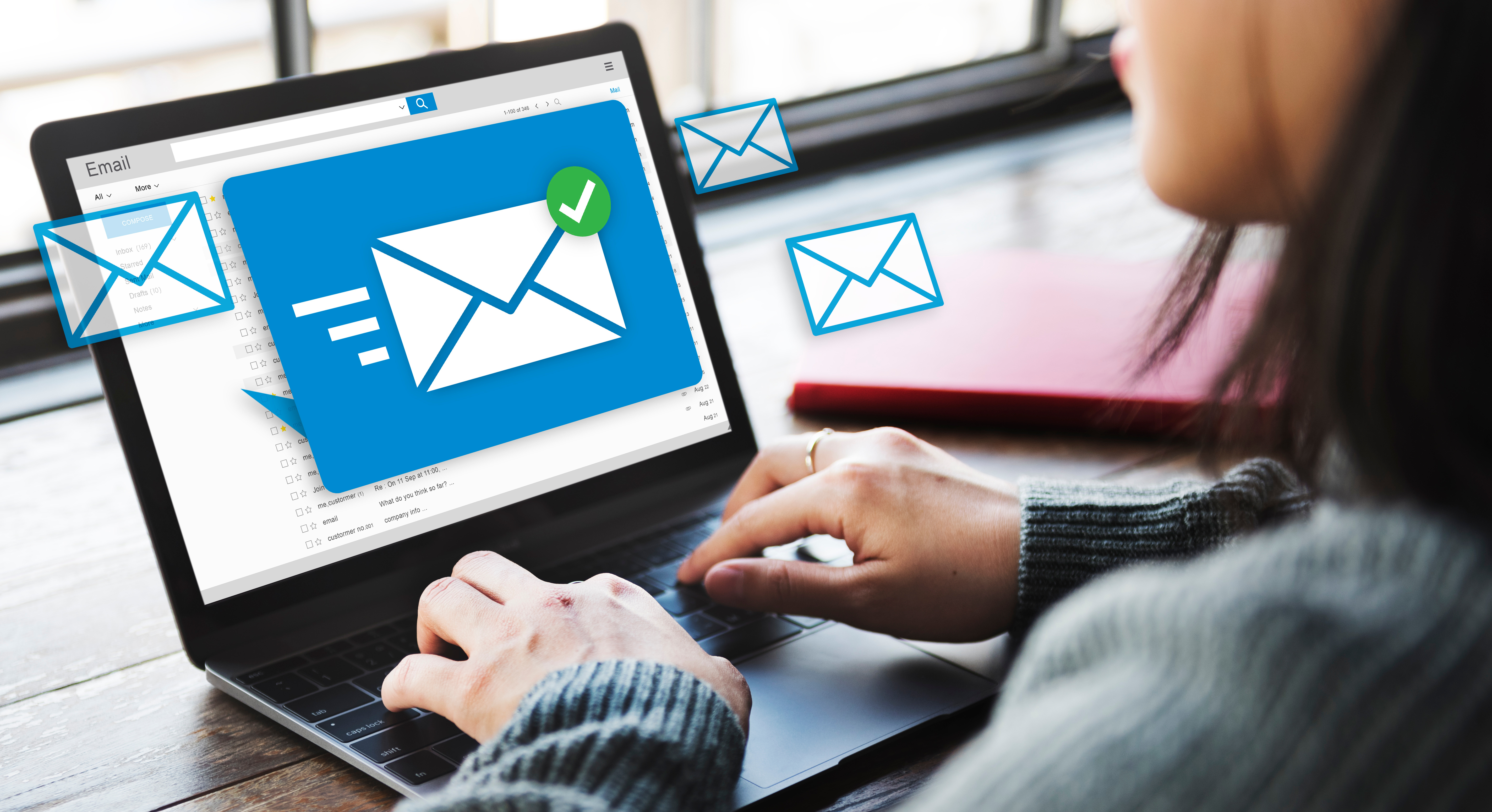
Table of Contents
1 What is B2B email marketing?
2 Why is email still so popular in 2022?
- ・Highest ROI of all marketing methods
- ・Used throughout the world, regardless of region
- ・Few barriers to getting started
4 What is the average open rate for marketing emails?
5 Important email marketing KPIs
8 How to use an email to generate sales
What is B2B email marketing?
B2B email marketing is the use of email to nurture customer relationships and promote purchases in B2B business. Email strategy differs considerably depending on whether you're targetting an individual consumer or another company.
For example, in B2C sales, the customer often makes impulsive, fast purchases on a whim or desire, whereas in B2B, the buyer's journey is much longer and involves multiple stakeholders. For this reason, B2C emails are often composed of salesy campaigns like limited time offers, while B2B emails are rather educational and focus on building up a positive image of the brand and gently leading the customer to an eventual sale.
Why is email still so popular in 2022?
Highest ROI of all marketing methods
Source: The Neilson Company
For over a decade now, email has delivered the highest ROI out of all marketing channels, surpassing both SEO and online ads. This is thought to be because you can get started with email marketing at an extremely low cost. At most, you will need to invest in an email marketing tool or marketing automation, but these days there are beginner-level tools offered at affordable prices. Moreover, email marketing is fairly straightforward and easy to learn, so you don't need to spend too much time obtaining any technical skills in advance, but can honestly just jump in and get started.
Used throughout the world, regardless of region
Email is a communication tool shared and used throughout essentially the entire world, regardless of region or language. Although with social media, in Japan, LINE is really popular, while in China it’s WECHAT, and in Malaysia it’s WhatsApp or Facebook Messenger. You need to formulate a new strategy for each and every country with social media marketing. However, you can easily approach customers in any country with email.
Few barriers to getting started
Even when incorporating a new email marketing tool, there is typically very little technical knowledge necessary to start crafting and sending email campaigns. As a matter of fact, you don't even need a marketing manager or marketing team to get results with email. Even a sales rep can easily learn the basics online and create simple HTML emails (starting with templates), right away.
Types of marketing emails
Next, let's go over the 4 main types of marketing emails - newsletters, drip campaigns, segmented emails, and re-engagement emails. Email newsletters will probably be the most familiar - these are sent in bulk to a large number of people at a time, without segmenting the group at all.
Drip campaigns are emails that are prewritten and automatically sent when a user makes a certain action. The triggering action could be downloading a whitepaper, creating a free account on your site, or signing up for an event. Then, the drip campaign evolves depending on how much the user responds to the email. As an example, in the image above, Mr. A at the top opens every email and clicks on links in the email, showing that he is very interested, and as a result- 3 consecutive emails are sent to him. Meanwhile, Mr. C doesn't even open the first email, so a 2nd email won’t be sent to him.
The third type is segmented emails, in which you choose a specific target and send content that is uniquely relevant to them. For example, you could choose to segment out manufacturing companies in Malaysia with less than 500 employees, if that is the group you most want to target.
Lastly, reengagement emails are sent to subscribers who have been inactive for a long time, with the goal of getting them to interact with your email and make an action.
What is the average open rate for marketing emails?
How often do you actually open marketing emails? I admit that I rarely open emails in the Promotion tab unless they seem directly relate to my interests. Now then, how often do you think people actually open marketing emails on average?
Average open rate across all industries
Drum roll, please. The average email open rate is... only 20% on average! Moreover, this is only the percent of emails that are being opened, so one can assume that the percent of emails being read is even lower. Also, this figure applies for nearly every country - the % of emails opened ends up around 20%.
Average open rate by sector
The email open rate can vary slightly depending on your industry. For instance, in the average open rate for education is as high as 23.42%, while it's nearly half that in Ecommerce at 15.68%.
|
Average open rate |
Average open rate |
Average click rate |
|
Construction |
21.77% |
2.26% |
|
Manufacturing |
19.82% |
2.18% |
|
Marketing/ |
17.38% |
2.04% |
|
Real Estate |
19.17% |
1.77% |
|
Software/Web App |
21.29% |
2.45% |
|
E-Commerce |
15.68% |
2.01% |
|
Education/Training |
23.42% |
2.90% |
|
Business/Finance |
21.56% |
2.72% |
Important email marketing KPIs
In email marketing, you can see major results if you send out emails consistently, on a long-term regular basis. In addition, you need to focus on measuring your KPI metrics and improving the results each time to maximize them.
In the table below, I have listed the most important KPI to measure and the ideal percentages you should aim for. Take a look and compare these figures to your own averages.
|
Metric |
Description |
How to calculate |
Goal |
|
Undelivered rate |
% of emails that were undelivered due to some error |
# errors / # emails sent × 100 |
>5% |
|
Open rate |
% of emails opened |
# emails opened / # emails delivered × 100 |
25%+ |
|
Click-through rate(CTR) |
% of recepients that click a link in an email |
# URL clicks / # emails delivered × 100 |
4%+ |
|
Conversion rate |
% of recepients that click on a link and proceed to fill out a form on your website (or complete the action) |
# conversions / # emails delivered x 100 |
2%+ |
|
Unsubscribe rate |
% of recipients that unsubscribe from your email |
# unsubscribed / # emails delivered × 100 |
>0.25% |
How to improve your KPIs
In order to improve your metrics, you have to determine the root of the problem that is bringing your results down. Let's go through the five main KPIs and the most common problem areas to see what needs to be fixed.
1. Why your undelivered rate is high
- You're sending to wrong emails or emails that no longer exist
- Your email includes heavy images or other files, and the recepient's server cannot receive it
- The customer has already unsubscribed to your newsletter or set it to go to spam
- Your email domain is fishy and was determined to be spam
- Your email domain is registered in a blacklist for being identified as spam too many times
2. Why your open rate is low
- You're sending at a time that your customers don't regularly check their email*
- You're not sending emails at a regular, consistent pace
- The subject line is too long and is getting cut off on mobile
- The subject line is boring or not enticing enough (as in, it does not include a hook or value proposition)
*Generally, 8-9 am in the morning and 1 pm after lunch are considered good times to send, and you should avoid sending emails on Friday as they'll get buried in the person's inbox over the weekend, and Monday is also a bad idea as they will likely be too busy with their own tasks to check a marketing email.
3. Why your click-through rate is low
- The content is not personalized or relevant to the customer
- You have sent too many salesy, promotional emails and created a negative image of your brand
- You have to scroll to find the CTA (call-to-action), and thus it is hard to locate
- Too many links, so it is unclear what the main CTA is
4. Why your conversion rate is low
- The form on your website has too many fields and is too much work to fill out
- The fields in the form are unclear and hard to fill out
- Your website appears unprofessional and needs work
5. Why your unsubscribe rate is high
- Due to any of the reasons mentioned above
- You are not sending content that is both relevant to them and high-quality
Best practices in email marketing (to improve your metrics)
- Cleanse your mailing list every few months, and remove the invalid emails
- Use HTML email so that you can track the open rate
- Change the sender name to an employee's name rather than the company name
- Lay out a plan in advance (try making an email content calendar)
- Decide on one clear CTA per email
- Optimize the subject line and conduct A/B testing to find the most effective style
- Find the best time and day of the week to send emails
- Arrange text so reader can understand instantly, without having to scroll
- Change URLs to buttons and add color to the background so it stands out
- Send personalized and segmented emails
What is email segmentation?
Email segmentation is when you send an email to a specific group that has something in common. You can segment by industry, region, demographic, interests, role at work, and so on. The idea is that by segmenting emails, you can provide truly relevant information to each group, and by doing so, generate a much higher level of engagement.
Let’s compare the average result of untargeted emails to segmented emails. For example, if you sent a bulk email to your entire list, you can expect some people to be interested, but most times, the majority of people won’t be as the content doesn’t clearly pertain to them or their situation. Thus, the open rate for untargeted email ends up around 10%, and the click rate is only 1% on average. However, if you segment out a group with something in common, like companies in the same industry and region, or customers with the same interests, and send them an email that is tailored that specific group containing only relevant information, then the open rate and click rate is much much higher. The open rate is usually between 20-50% and you can reach a click rate as high as 20%
How to use an email to generate sales
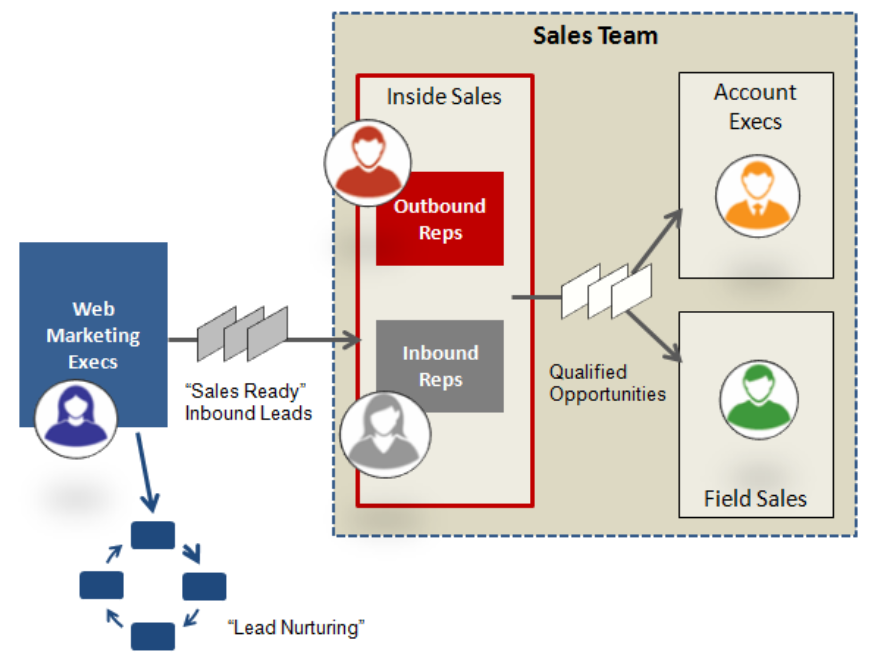
Incorporate inside sales to get results in the short-term
If you want to see a speedier ROI with email, then you’ll have to incorporate an inside sales team. The purpose of inside sales is to make calls to prospects, determine their level of interest, and eventually set up a sales meeting.
One of the basic goals of email is to encourage an action and get the customer to click on your CTA- whether it is to sign up for a webinar, set up a free account, or download a whitepaper. However, typically only customers who have immediate needs and are already considering a purchase tend to have a conversion. Many of the customers who clicked on the CTA may not make it all the way to a conversion and end up just bouncing from your site.
However, those that clicked on a link (or even just opened the email) can be assumed to have some needs or interest in your services, and therefore also can be approach. This is where inside sales comes in.
Inside sales can contact everyone who clicked on a link, even if they didn’t complete the action. By backing every email campaign with a sales approach, you’re able to see results from email marketing immediately.
The process is as illustrated in the above diagram. First, you can nurture your leads and increase your brand recognition through email marketing. This nurturing aspect is really important, of course, but in order to connect it to sales, you have to track the customer’s response to your email campaigns, and have Inside Sales check in with active leads to see if there are any new challenges they’re dealing with and if there’s an area in which your business can help.
It’s crucial that your inside sales team isn’t just trying to blindly form meetings for the sales rep. Instead, they have to ask a lot of questions, really listen and understand the customer’s situation and needs, and then if only the timing is right should they set up a meeting.
Next, by using a marketing automation tool, you can track the online activity of customers when they visit your site. After a customer clicks on a link in your email, you can see their pathway around your site, and every single web page they clicked on, whether it’s the pricing page or case studies. From this you can make an educated guess as to how interested they are in your product/service. The inside sales would ideally review each lead’s activity online and get a feel for their needs before making contact.
How to come up with effective email content
When planning out email content, the number one thing you want to be conscious of is that your emails are offering helpful information to your customers. As a general rule, around 80% of your emails should be educational, as opposed to sales campaigns.
Next, our philosophy for coming up with email content is to send emails that argue your product's case, and slowly but surely brings the customer closer to a purchase. You can do this by sending out content that negates their reasoning for NOT buying your product. The four most common reasons for not making a purchase are (1) a lack of trust in the brand/company, (2) a lack of necessity for the product, (3) thinking that it is not a good fit with their business, and (4) no sense of urgency for the product.
For the trust or credibility issue, you could share new industry know-how or an interview with your CEO that presents your brand as a thought leader in the field. Or you can appeal to necessity, by showing exactly what problems you can solve, and give examples of uses in their industry. You can also create a sense of urgency by sending out a limited time only campaign. Ideally, you would start with building trust, promoting the necessity of your product, arguing the fit, and then finally instilling a sense of urgency.
In conclusion
To wrap up, email marketing is a highly effective strategy in both B2C and B2B. By following the advice we have introduced in this article, you can use email to strengthen customer relationships, incit customer interest, and directly generate new sales. If you're just getting started, look into email marketing tools and marketing automation services (like BowNow!), and set up inside sales within your organization to see a major ROI in the shortest term possible.
If you want to learn even more about email marketing, check out our free ebook at the link below ▼

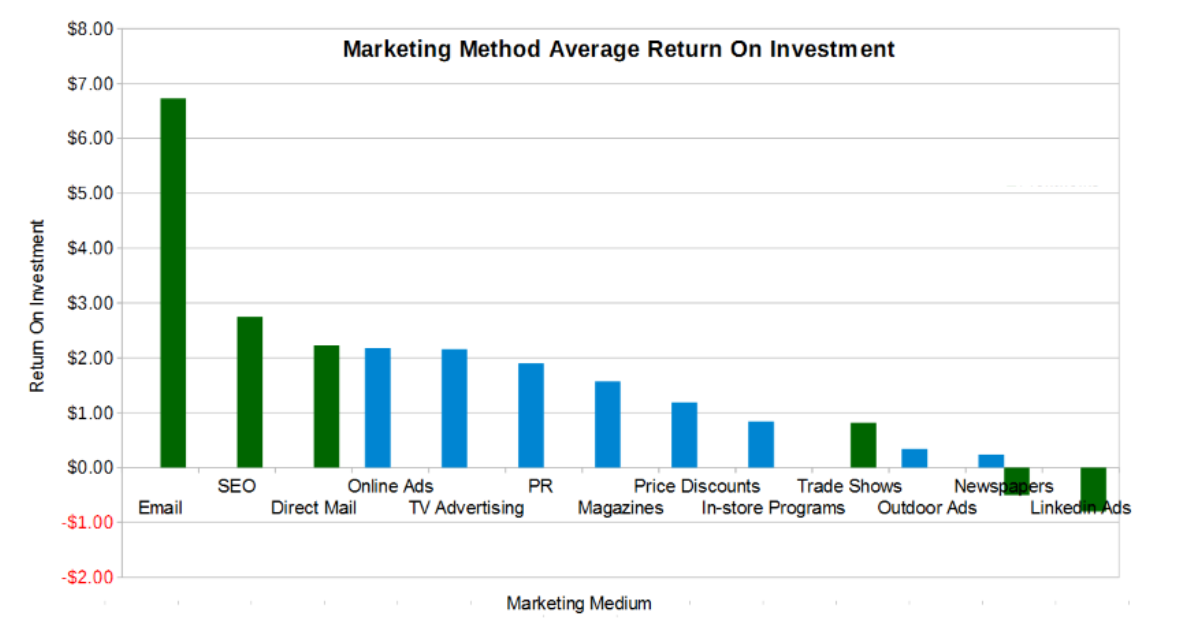

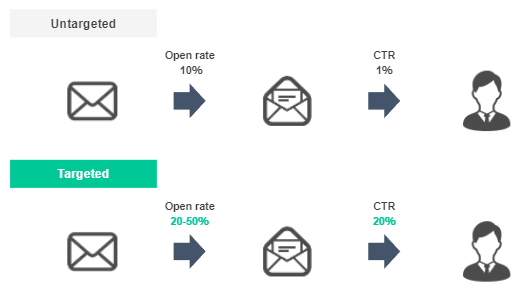
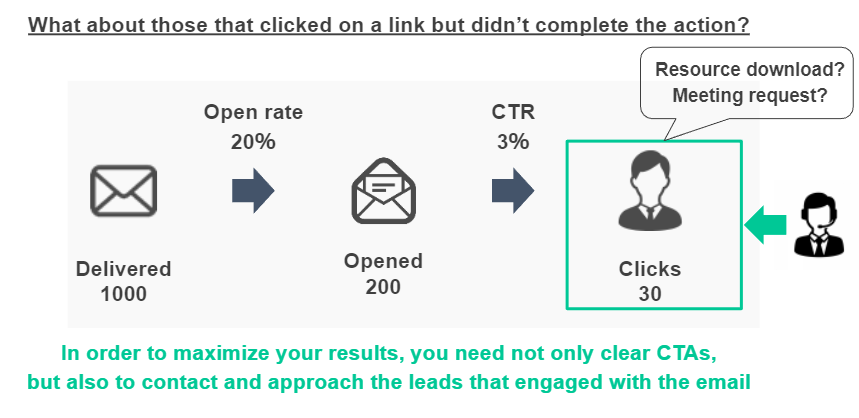
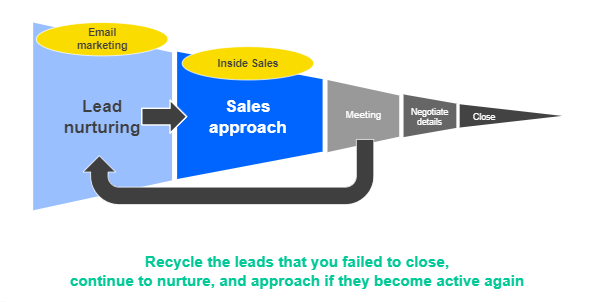

.jpg)
.jpg)
.jpg)


